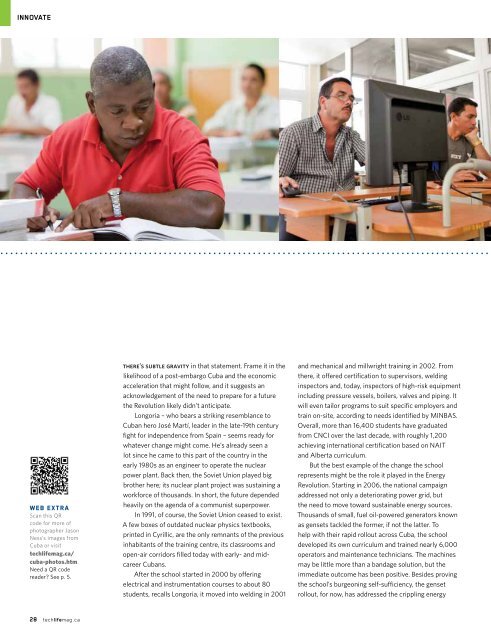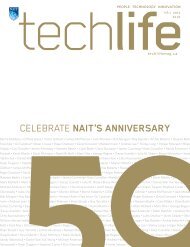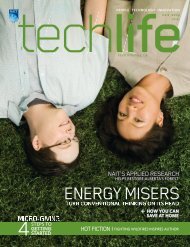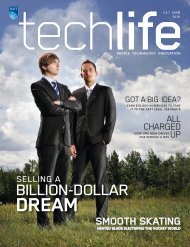CUBA'S - techlife magazine
CUBA'S - techlife magazine
CUBA'S - techlife magazine
Create successful ePaper yourself
Turn your PDF publications into a flip-book with our unique Google optimized e-Paper software.
INNOVATE<br />
web extra<br />
Scan this QR<br />
code for more of<br />
photographer Jason<br />
Ness’s images from<br />
Cuba or visit<br />
<strong>techlife</strong>mag.ca/<br />
cuba-photos.htm.<br />
Need a QR code<br />
reader? See p. 5.<br />
28 <strong>techlife</strong>mag.ca<br />
there’s subtle gravity in that statement. Frame it in the<br />
likelihood of a post-embargo Cuba and the economic<br />
acceleration that might follow, and it suggests an<br />
acknowledgement of the need to prepare for a future<br />
the Revolution likely didn’t anticipate.<br />
Longoria – who bears a striking resemblance to<br />
Cuban hero José Martí, leader in the late-19th century<br />
fight for independence from Spain – seems ready for<br />
whatever change might come. He’s already seen a<br />
lot since he came to this part of the country in the<br />
early 1980s as an engineer to operate the nuclear<br />
power plant. Back then, the Soviet Union played big<br />
brother here; its nuclear plant project was sustaining a<br />
workforce of thousands. In short, the future depended<br />
heavily on the agenda of a communist superpower.<br />
In 1991, of course, the Soviet Union ceased to exist.<br />
A few boxes of outdated nuclear physics textbooks,<br />
printed in Cyrillic, are the only remnants of the previous<br />
inhabitants of the training centre, its classrooms and<br />
open-air corridors filled today with early- and midcareer<br />
Cubans.<br />
After the school started in 2000 by offering<br />
electrical and instrumentation courses to about 80<br />
students, recalls Longoria, it moved into welding in 2001<br />
and mechanical and millwright training in 2002. From<br />
there, it offered certification to supervisors, welding<br />
inspectors and, today, inspectors of high-risk equipment<br />
including pressure vessels, boilers, valves and piping. It<br />
will even tailor programs to suit specific employers and<br />
train on-site, according to needs identified by MINBAS.<br />
Overall, more than 16,400 students have graduated<br />
from CNCI over the last decade, with roughly 1,200<br />
achieving international certification based on NAIT<br />
and Alberta curriculum.<br />
But the best example of the change the school<br />
represents might be the role it played in the Energy<br />
Revolution. Starting in 2006, the national campaign<br />
addressed not only a deteriorating power grid, but<br />
the need to move toward sustainable energy sources.<br />
Thousands of small, fuel oil-powered generators known<br />
as gensets tackled the former, if not the latter. To<br />
help with their rapid rollout across Cuba, the school<br />
developed its own curriculum and trained nearly 6,000<br />
operators and maintenance technicians. The machines<br />
may be little more than a bandage solution, but the<br />
immediate outcome has been positive. Besides proving<br />
the school’s burgeoning self-sufficiency, the genset<br />
rollout, for now, has addressed the crippling energy










